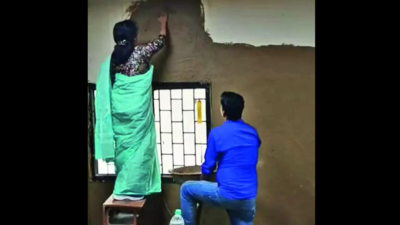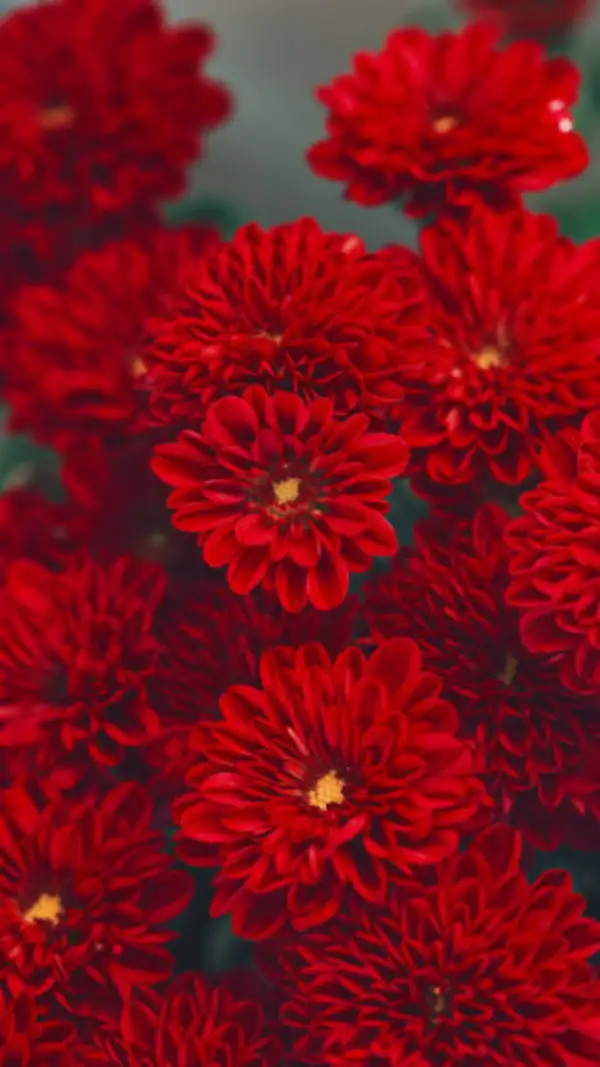- News
- City News
- delhi News
- To combat Delhi heat, DU principal applies cow dung on classroom walls, sparks debate
Trending
To combat Delhi heat, DU principal applies cow dung on classroom walls, sparks debate
Lakshmibai College's principal, Pratyush Vatsala, applied cow dung to classroom walls in Block C to combat the heat, aiming for an eco-friendly solution amidst infrastructure issues. This unconventional method, intended as an internal update, sparked debate on social media, highlighting the need for better facilities like fans and coolers in older buildings.
NEW DELHI: In a move that has both amused and bewildered many, the principal of Delhi University's Lakshmibai College has taken a hands-on-rather, a hands-dirty - approach to cooling down classrooms. Quite literally. To combat the scorching heat in the college's ageing Block C, she personally applied cow dung to the walls of a classroom, a method rooted in traditional Indian practices believed to regulate indoor temperatures.
The act, documented in a video shared by the principal, Pratyush Vatsala, herself in the college's internal teachers' group, was intended to showcase a return to age-old, eco-friendly methods in the face of infrastructure limitations. But what was meant to be an internal update quickly escaped the bounds of WhatsApp, landing on social media feeds and setting off a firestorm of reactions ranging from admiration to disbelief.
In the video, Vatsala is seen working alongside other staff members, spreading the cow dung with her own hands on the walls of a classroom. According to teachers, the effort was part of an initiative to make classrooms more comfortable for teaching, especially in Block C, which is one of the oldest structures on campus, perched above the canteen and said to be hot during summers.
Poll
Should the college invest more in infrastructure improvements instead of traditional methods?
While the college recently saw vice-chancellor Yogesh Singh lay the foundation for a new block, the older buildings remain neglected. This has only added to the frustration. "Some rooms are definitely hot, but no one asked for cow dung," a student said, adding in the same breath, "We just need proper fans-or coolers, at least."
When TOI reached out for a comment, the principal said, "It's part of a research proposal by faculty."
The principal's unconventional solution may stem from centuries-old knowledge - cow dung has long been used in rural India to cool homes and repel insects-but its application in a modern, urban college setting has triggered a debate.
Although cow dung has traditionally been used in rural India as a cooling and insulating material, its use in a modern, urban academic setting has sparked questions about practicality and symbolism. In rural areas, a mix of cow dung and mud is commonly used to coat floors and walls, helping to regulate temperature while offering cooling, antibacterial and insect-repellent properties. Some African communities also use similar techniques, giving this practice global rural roots.
Even Union minister Nitin Gadkari previously launched a paint made from cow dung, calling it eco-friendly and non-toxic. Yet experts agree that such materials have little relevance in cement-heavy urban architecture. Cow dung, with its low compressive strength, can't replace modern cooling systems in concrete structures. According to experts, in Lakshmibai College-with old buildings, poor ventilation, and large rooms-the absence of fans or coolers can't be substituted with a cow dung coating . The episode may not have offered the most practical application, but it has reignited a larger dialogue-one about sustainability, innovation, and how we balance tradition with modern demands.
End of Article
FOLLOW US ON SOCIAL MEDIA









